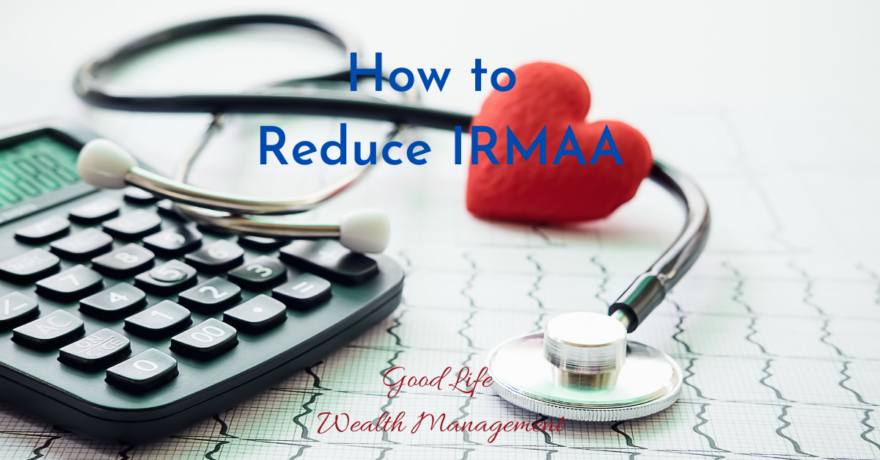Many retirees want to find ways to avoid or reduce IRMAA. Why do retirees hate Irma? No, not a person, IRMAA is Income Related Monthly Adjustment Amount. That means that your Medicare Part B and D premiums are increased because of your income. We are going to show how IRMAA is calculated and then share ways you can reduce IRMAA.
Medicare Part A is generally free at age 65, and most people enroll immediately. Part A provides hospital insurance for inpatient care. Part B is medical insurance for outpatient care, doctor visits, check ups, lab work, etc. And Part D is for prescription drugs. When you enroll in Parts B and D, you are required to pay a monthly premium. How much? Well, it depends on IRMAA.
IRMAA Levels for 2022
IRMAA increases your Medicare Part B and D premiums based on your income. There is a two year lag, so your 2022 Medicare premiums are based on your 2020 income tax return. Here are the 2022 premiums, based on your Modified Adjusted Gross Income, or MAGI.
2020 Single MAGI
$91,000 or less
$91,001 to $114,000
$114,001 to $142,000
$142,001 to $170,000
$170,001 to $500,000
$500,001 and higher
2020 Married/Joint MAGI
$182,000 or less
$182,001 to $228,000
$228,001 to $284,000
$284,001 to $340,000
$340,001 to $750,000
$750,001 and higher
2022 Monthly Part B / Part D
$170.10 / Plan Premium (PP)
$238.10 / PP + $12.40
$340.20 / PP + $32.10
$442.30 / PP + $51.70
$544.30 / PP + $71.30
$578.30 / PP + $77.90
How to Calculate MAGI
I have written previously about how the IRS uses a figure called Modified Adjusted Gross Income or MAGI. MAGI is not the same as AGI and does not appear anywhere on your tax return. Even more maddening, there is no one definition of MAGI. Are you calculating MAGI for IRA Eligibility, the Premium Tax Credit, or for Medicare? All three use different calculations and can vary. It’s crazy, but our government seems to like making things complex. So, here is the MAGI calculation for Medicare:
MAGI starts with the Adjusted Gross Income on your tax return. For Medicare IRMAA, you then need to add back four items, which you may or may not have:
- Tax-exempt interest from municipal bonds
- Interest from US Savings Bonds used for higher education expenses
- Income earned abroad which was excluded from AGI
- Income from US territories (Puerto Rico, Guam, etc.) which was non-taxable
Add back those items to your AGI and the new number is your MAGI for Medicare.
Why Retirees Hate IRMAA
The IRMAA levels are a “Cliff” tax. Make one dollar over these levels and your premiums jump up. Many retirees plan on a comfortable retirement and find out that their Social Security benefits are much less than they expected because of Medicare Premiums. For a married couple, if your MAGI increases from $182,000 to $228,001, you will see your premiums double. And while young people think it must be so nice to get “free” health insurance for retirees, this couple is actually paying $8,164.80 just for their Part B Premiums every year! And then there are still deductibles, co-pays, prescriptions, etc.
Sure, $228,001 in income sounds a lot for a retiree, right? Well, that amount includes pensions, 85% of Social Security, Required Minimum Distributions, capital gains from houses or stocks, interest, etc. There are a lot of retirees who do get hit with IRMAA. And this is after having paid 2.9% of every single paycheck for Medicare over your entire working career. That’s why many want to understand how to reduce IRMAA.
10 Ways to Reduce MAGI for IRMAA
The key to reducing IRMAA is to understand the income thresholds and then carefully plan out your MAGI. Here is what you need to know.
- Watch your IRA/401(k) distributions. Avoid taking a large distribution in one year. It’s better to smooth out distributions or just take RMDs.
- Good news, Roth distributions are non-taxable. IRMAA is another reason that pre-retirees should be building up their Roth accounts. And there are no RMDs on Roth IRAs.
- Be careful of Roth Conversions. Conversions are included in MAGI and could trigger IRMAA.
- If you are still working, keep contributing to a Traditional IRA or 401(k) to reduce MAGI. If you are self-employed, consider a SEP or Individual 401(k). The age limit on Traditional IRAs has been eliminated.
- Itemized Deductions do NOT lower AGI. While State and Local Taxes, Mortgage Interest, Charitable Donations, and Medical Expenses could lower taxable income, they will not help with MAGI for IRMAA.
- However, if you are 70 1/2, Qualified Charitable Distributions (QCDs) do reduce MAGI. If you are younger than 70 1/2, donating appreciated securities can avoid capital gains.
- Avoid large capital gains from sales in any one year. Be sure to harvest losses annually in taxable accounts to reduce capital gains. Use ETFs rather than mutual funds in taxable accounts for better tax efficiency. Place income-generating investments such as bonds into tax-deferred accounts rather than taxable accounts. Consider non-qualified annuities to defer income.
- If you still have a high income at age 65, consider delaying Social Security benefits until age 70.
- Once you are 65, you cannot contribute to a Health Savings Account (HSA). However, you may be able to contribute to an FSA (Flexible Spending Account), if your employer offers one. The maximum contribution for 2022 is $2,850 and you may be able to rollover $570 in unused funds to the next year.
- Avoid Married filing separately. File jointly.
Life-Changing Event
Medicare does recognize that situations change and your income from two years ago may not represent your current financial situation. Under specific circumstances, you can request IRMAA be reduced or waived if you have a drop in income. This is filed using form SSA-44, as a “Life Changing Event”. Reasons for the request include:
- Marriage, Divorce, or Death of a Spouse
- You stopped working or reduced your hours
- You lost income-producing property due to a disaster
- An employer pension planned stopped or was reduced
- You received an employer settlement due to bankruptcy or closure
Outside of the “Life-Changing Event” process, you can also appeal IRMAA within 60 days if there was an error in the calculation. For example, if you filed an amended tax return, and Social Security did not use the most recent return, that would be grounds for an appeal.
A few other tips: If you are subject to IRMAA and have Part D, Prescription Drug, coverage, consider Part C. Medicare Part C is Medicare Advantage. Many Part C plans include prescription drug coverage, so you will not need Part D. And there is no IRMAA for Part C. Lastly, while you can delay Part B if you work past 65, be sure to sign up immediately when you become eligible to avoid penalties.
IRMAA catches a lot of retirees, even though they don’t have any wages or traditional “income”. Between RMDs, capital gains, and other retirement income, it’s common for retirees to end up paying extra for their Medicare premiums. If you want to learn how to reduce IRMAA, talk with your financial advisor and analyze your individual situation. I’m here to help with these types of questions and planning for clients.







